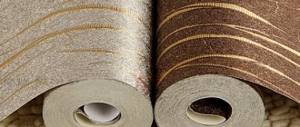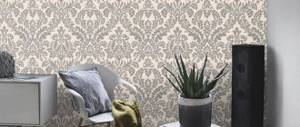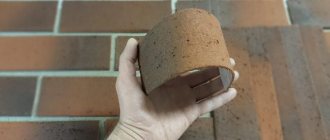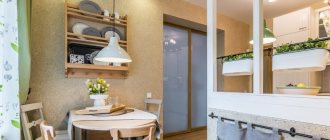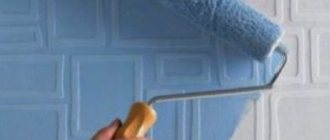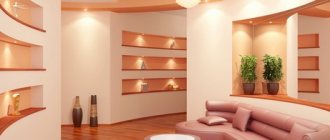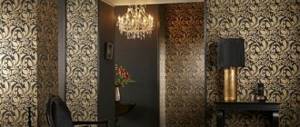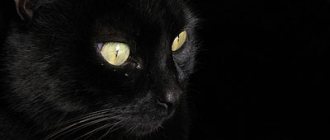Home/Articles/How to use bamboo in the interior - 30 photos
As the Chinese proverb says:
“A man must raise one child, build a house and plant bamboo.”
Bamboo has long been widely used as a construction and finishing material in the countries of the Pacific and Asian regions. And nowadays it is gaining more and more popularity in countries where it does not grow. With the promotion of oriental culture in all sectors of many countries around the world, the oriental style of interior design has made many traditional oriental finishing materials popular.
Photo by Accen Trix Design
Properties of bamboo
Bamboo is truly an amazing material. Despite the fact that, due to its high porosity and ability to absorb moisture (hydroscopicity), it is four times higher than that of cotton, bamboo wood does not rot, even when completely immersed in water, mud, or even in a swamp infested with an abundance of pests and microorganisms.
Bamboo wood has such an amazing ability to withstand an unfavorable environment thanks to the substance contained in its fibers, called bamboo jade by the Japanese scientists who discovered it, which, in addition to the ability to fight parasites, endowed bamboo with special strength. It is worth noting the undoubted environmental friendliness of the material. Due to its rapid growth and growth in pristine forests, far from industrial enterprises that are harmful to the atmosphere, bamboo wood does not contain particles harmful to human health.
Advantages of natural bamboo
Despite its natural origin, bamboo wallpaper turns out to be not so delicate. And in some characteristics they even surpass more traditional finishing materials for the kitchen. Their main advantages:
- Absolutely environmentally friendly, hypoallergenic and a surprisingly large selection of “native” colors and textures.
- Bactericidal effect - this property of bamboo comes in handy in rooms with high humidity. Such wallpapers are not afraid of mold and are not affected by insects.
- High (for plant finishing) mechanical strength, resistance to abrasion and temperature changes.
- No shrinkage and other deformations under the influence of external factors, color preservation under the influence of sunlight.
- Easy to maintain - just wipe the bamboo wallpaper with a damp cloth or soapy water. They also do not absorb odors.
Bamboo canvas can even be used to finish the apron in the kitchen work area instead of an unconvincing imitation on photo tiles or skins.
Panels and canvas
- Bamboo panels
They are made from thin strips of loose stems and are intertwined in a variety of options, and also during the production process, the strips are glued together. Depending on which part of the bamboo trunk the strips are obtained from - internal or external - will depend on what load the panels can withstand. If the panel is made from the outer, more rigid part, such slabs can withstand external atmospheric loads and can be used for finishing building facades. Panels made from internal fibers are softer and are recommended for indoor use.
- Canvas or bamboo wallpaper.
The difference between bamboo wallpaper and slabs is that similar loose strips are not intertwined, but glued to a fabric base. Thanks to its flexible structure, bamboo sheets can be used to decorate not only flat surfaces, but also arches, columns, and plasterboard structures.
Another difference between wallpaper and slabs is their range of colors and patterns, allowing you to choose the right one for your bedroom interior photo.
- Curtains.
During the era of Soviet perestroika, in almost every house there were bamboo curtains hanging in the corridor, which, for example, in the market of my city, were sold by Vietnamese traders who proudly called them Vietnamese. I initially really liked the characteristic sound of bamboo sticks hitting each other, but the daily “struggle” with hanging thickets forced me to give up the oriental wonder.
- Bamboo bed linen.
The remarkable properties of bamboo for absorbing moisture have become in demand in the textile industry. Sheets and duvet covers made from bamboo cope with the cycle of absorption and release of moisture much more effectively than their counterparts from cotton, and in terms of strength and wear resistance they have no equal. Plus, to the touch, bed linen made of bamboo threads is no different from silk. Haven't you run out to buy such wonderful underwear yet?
Main features of bamboo parquet
Until recently, it was generally accepted that the best parquet was made from larch or oak wood, but after the advent of bamboo parquet, the bar for the quality of floor finishing materials has risen.
Features include:
- exceptional strength and wear resistance during operation;
- high fire resistance;
- in comparison with parquet made from classical materials, it withstands moisture better;
- has an antistatic effect, which prevents dust from accumulating on it;
- increased resistance to various types of mold and insects;
- environmental friendliness;
- due to low thermal conductivity, provides floor heat;
- excellent sound insulation;
- unique appearance.
Due to the sugar content in bamboo fibers, during heat treatment the material can radically change color, from straw to coffee, which allows you to choose a shade suitable for the interior, without the use of harmful chemical dyes.
Choosing parquet depending on design
When choosing bamboo parquet, you need to decide on the color scheme, which is presented in many options. Materials of natural color are better suited for interior decoration made in light colors; darker shades of coffee are in harmony with mahogany elements.
Having decided on the color, you need to look at the varnish coating, which can be silky-matte, matte or glossy. For large halls, parquet with a glossy finish is better suited; the matte version will look great in small rooms. It is reasonable to use parquet with a silky-matte finish in office premises, since it is considered more wear-resistant.
One of the most important criteria when choosing parquet is its quality characteristics, which are used to evaluate:
- correct design geometry;
- integrity of the product condition;
- possible presence of cracks;
- uniform thickness of the parquet block.
The choice of bamboo parquet depends on personal preferences, design and style of the intended room and is limited by imagination and the availability of financial resources.
Main types of parquet
If you don’t know how to choose high-quality bamboo parquet, then first of all you should pay attention to the company that manufactured the product. Naturally, it is better to focus on well-known companies that have significant experience in the industry. Large enterprises take care of their image by checking manufactured products and monitoring the production process.
Particular attention should be paid to the packaging of the material, since a conscientious manufacturer packs the products well and puts a company logo on the provided product. It is mandatory to check the quality certificate, which indicates that the product does not contain substances harmful to health.
According to domestic GOST, parquet of category “A” is considered the best, and accordingly it is the most expensive.
There are three main types of bamboo panels on the market:
- Piece parquet has a convenient locking connection, which makes it easy to replace individual elements in case of damage.
- Mosaic parquet is mainly intended for decorative work and is distinguished by a variety of shapes.
- Solid parquet board is the most reliable multilayer version of bamboo panel, excluding decorative use.
Bamboo furniture
Traditional materials for Asian countries are bamboo and rattan. Almost any type of furniture can be made from bamboo: cabinets, chests of drawers, sofas, armchairs, chairs. Having undoubted aesthetic and practical advantages, bamboo furniture requires little specific care.
- Do not place furniture near heating devices under any circumstances; it may crack.
- The room needs to maintain a certain humidity.
- Do not use chemicals containing abrasive particles for cleaning.
Bamboo wallpaper in the interior
Bamboo wallpaper has gained its popularity due to the naturalness of the materials. At the present stage, interior trends are dominated by natural space design: country, constructivism, minimalism, eco-style and chalet style. Bamboo wallpaper is suitable for a wide variety of rooms. Due to its set of advantages, this type of coating is used in bedrooms, living rooms, children's rooms and even kitchens.
Undoubtedly, during installation it is worth taking into account the color scheme, temperature and humidity indicators.
For example, in bedrooms, headboards are decorated with bamboo wallpaper. In living rooms, a bamboo accent wall would be a great option. You can use neutral colors of bamboo fabric. Then the interior will become fresher. Additionally, you can add decorative elements. When choosing this type of coating for the kitchen, it is worth considering several factors.
Decor
The most common use of bamboo in the interior is in the form of all kinds of decorative items and compositions. And first of all, it is worth highlighting the main ideological popularizer of bamboo - the ancient eastern teaching of Feng Shui, which gives it magical properties to resist and drive out evil spirits, and ward off the evil eye and damage from a person. But since the topic of otherworldly forces is a matter of faith, let’s talk about the actual use of decor in the interior.
Decorative partition in a bathroom combined with a toilet
Decorating with bamboo can be used not only in the design of oriental-style rooms, but as you will see in the photo below, even in the interior of a classic living room.
Bamboo chairs in the interior of a classic living room

